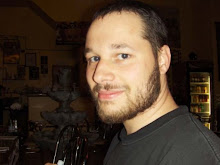Questions for Traditionalists
Check here for an interesting post.
This has lead me to the following musings.
How much of the traditionalist movement is a strictly a middle-class phenomenon? I know that Tareeqah Tijaniyyah is making inroads among the African community, but other than that organization what effect has there been among working class Muslims? I think there is an inherent bias in these salafi vs. traditionalist discussions, one which views things through the eyes of affluent, college educated, and internet connected immigrants and their children and convert-followers (especially among the whites) and not from the perspective of the oppressed black population and working class immigrant communities who, in shere numbers, make up the bulk of the Muslim community in this country. Even when one looks at Tablighi Jamaat, which is the closest thing there is to a traditionalist mass movement and which I respect very much for working so hard to spread the deen, one must ask how many of its members are elite professionals, how many affluent businessmen, and how many, once these first two categories are deducted, are working class people? This skewed class structure will introduce a systematic bias which will effect the formulation of goals, tactics, and criteria of success by the Islamic movement. It will also introduce economic, ethnic, racial, and social divisions which can be exploited to keep this movement fractured and weak. Instead of the oppressed working out their own liberation under the banner of Islam, we will have the affluent, with their own interests and biases skewing their vision, even if unintentionally, dictating what is and is not properly Islamic and thus either splintering the movement or moving it in directions which are ultimately futile. This is not to say that the wealthier brothers and sisters should be dismissed or ignored; but they do need to follow the lead of those who are on the front lines of the struggle, those who are experiencing the zulm of this jahil nation directly: these are the Black Muslims, the increasing number of Latino Muslims, and our working class immigrant brothers and sisters, all of whom are the first to be targetted by the oppressors.
There is also the issue of how to properly categorize some of the Urban
Masajid. Perhaps they are more political than Salafi; they are more flexible on certain fiqh issues due to the influence of the Salafi Dawah, but they are not tied with Saudi Arabia, are not rabidly anti-shi'ite, and are more concerned with community development and political solidarity than with extremely fine points of aqeedah. They pool their resources to help brothers and sisters in dire economic need, to provide social services, or to express solidarity with political prisoners instead of doing so to build the masjid a new parking lot. They are very critical of Zionism even though this is not the PC thing to do. They call attention to inability of this country to face its own racist and imperialist history, policies, and mentality, even though this may turn off some potential white converts. They are willing, in short, to speak the truth even when doing so will not gain them friends among the kuffaar and will perhaps even irritate their more comfortable brothers and sisters. Changes in orientation among the upper economic strata of Muslims in America do not necessarily reflect a deep-seated change in the American Islamic community as a whole. They may simply be an example of a politically quietistic turn among the affluent Muslims (especially given that the change is more towards the Deobandi-Tablighi tradition) which reflects both their alienation from politics and their desire to keep a low profile. This represents a reality of Islam that goes beyond a simplistic Salafi vs. Traditionalist dichotomy.
Labels: Islam, Political Prisoners, Traditionalism


0 Comments:
Post a Comment
<< Home